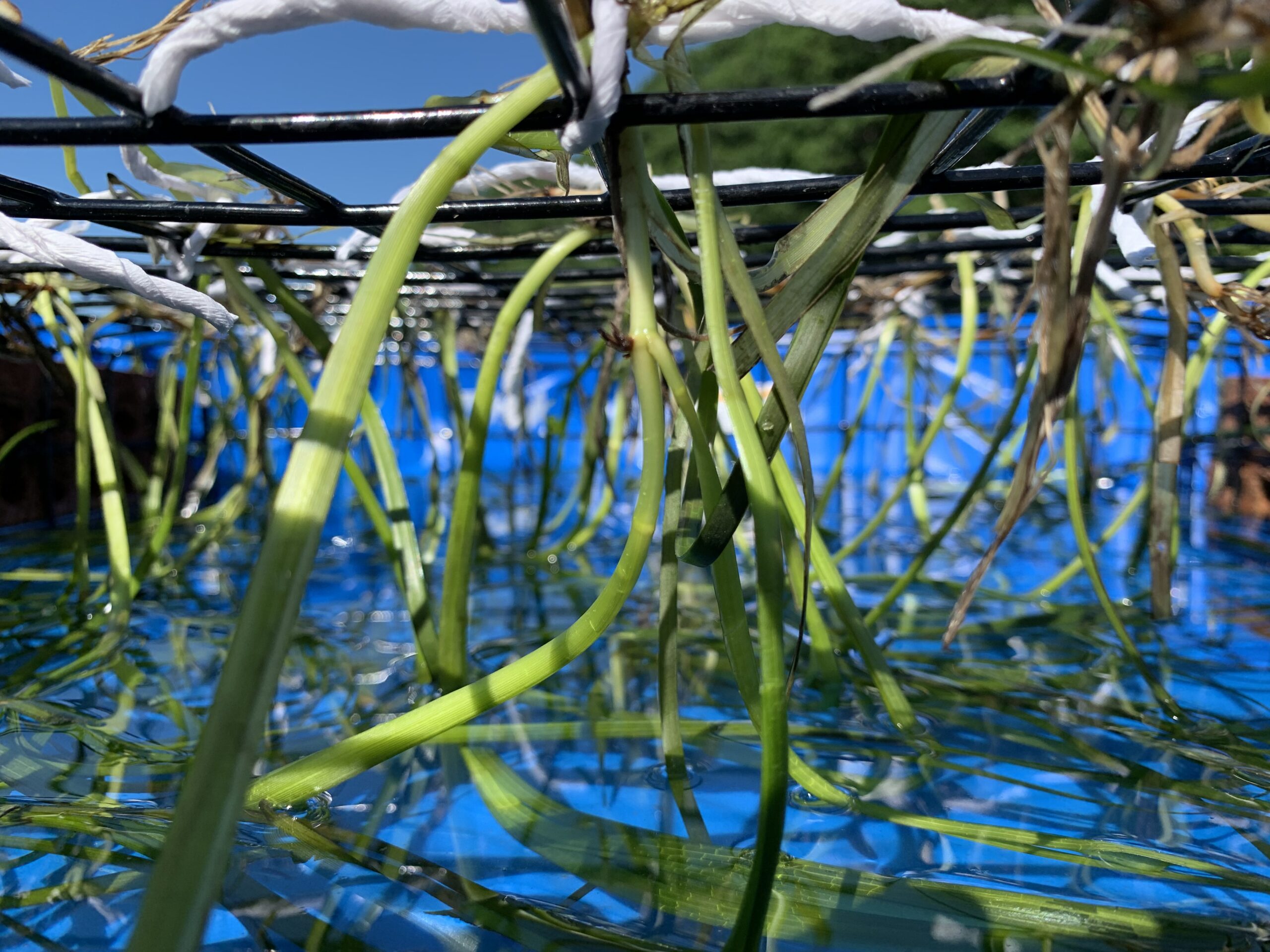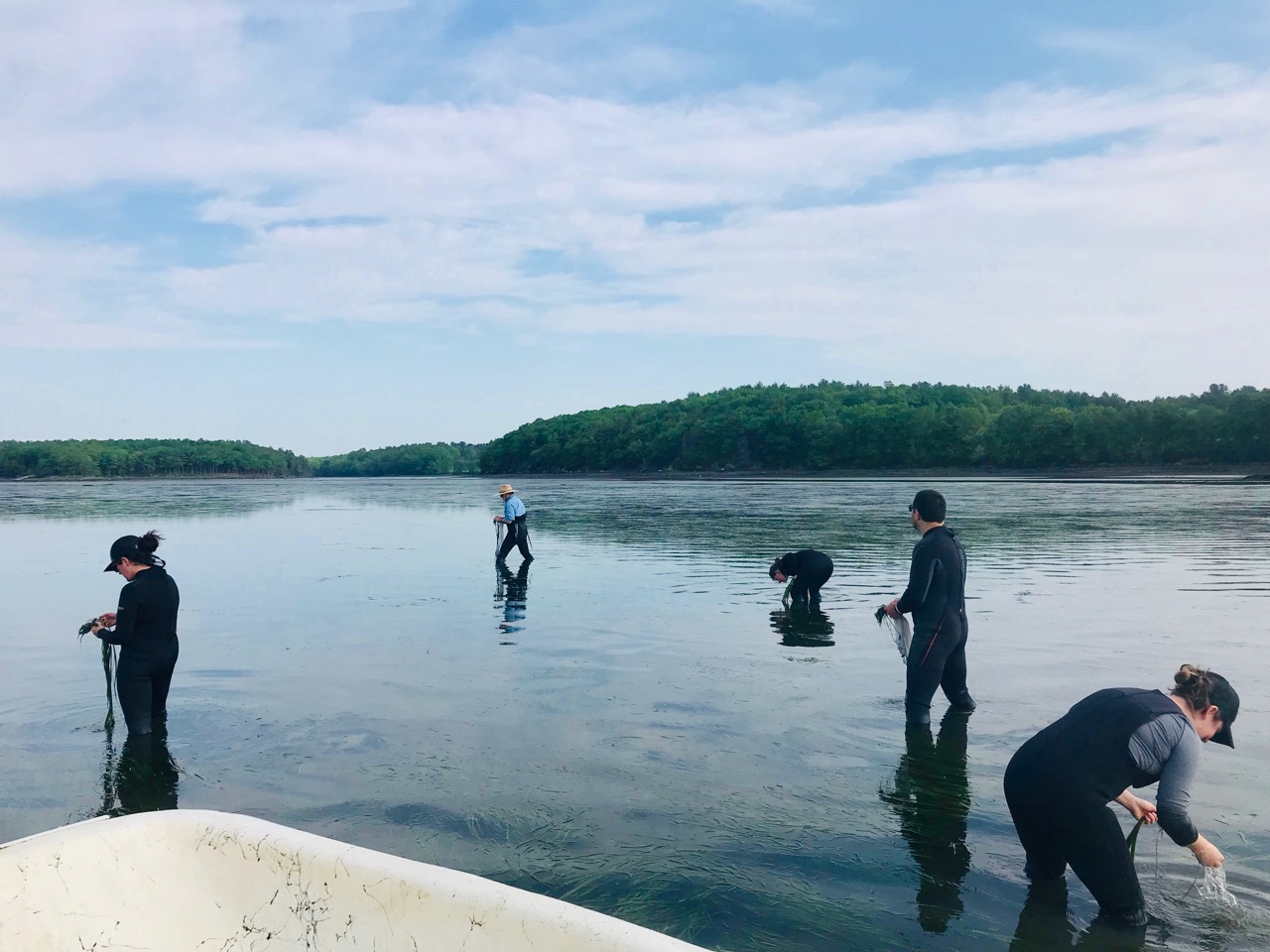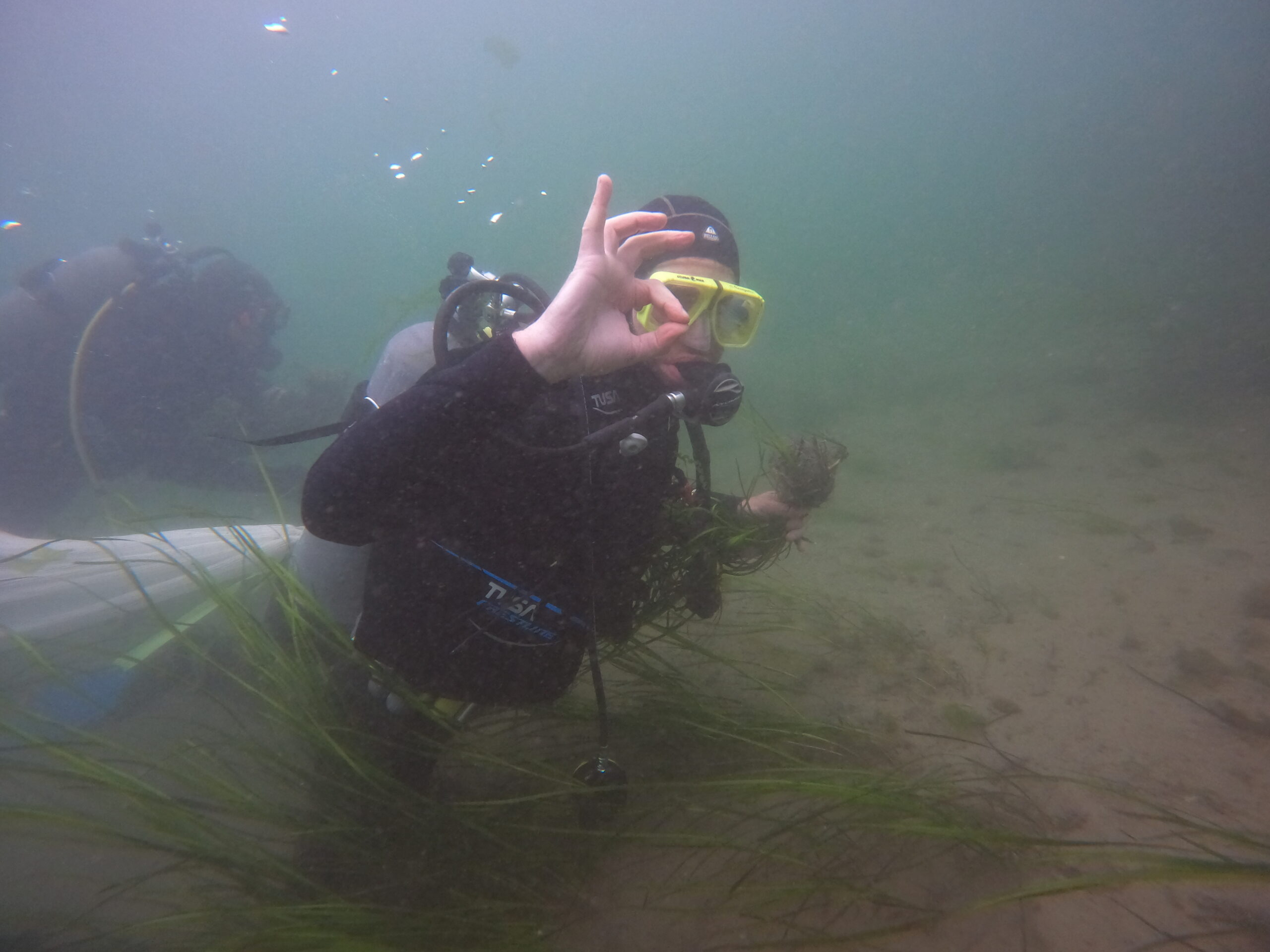Continuing our story ‘Growing Grass in the Great Bay Estuary’ from this spring, during May and June, PREP and a whole host of eelgrass scientists, partner organizations, and volunteers planted five experimental eelgrass beds around the Great Bay Estuary. The specific sites for these test beds were selected using results from an updated suitability model identifying locations of high potential for eelgrass recovery. A total of 8,000 eelgrass shoots were transplanted across all five sites (1,600 shoots at each) with an equal number of plants coming from two different populations: one from a bed in the Great Bay and the other from a bed in the Piscataqua River. Additionally, shoots were transplanted using two different techniques: planting individual whole shoots and tying multiple shoots to weighted wire frames known as TERFS (see photo below).

After waiting four to five weeks to allow the eelgrass to grow and get established, teams went out to remove the TERFs and see how our plantings were coming along. Unfortunately, at that point in July, one site out towards the coast appeared to have been pillaged by green crabs that were abundant in that area. However, several of the other sites looked as if they were doing quite well, with rooted grass in both hand-planted and TERF-planted plots. Throughout the summer and into the fall, with the help of the Great Bay-Piscataqua Waterkeeper and student volunteers, we will be periodically monitoring the eelgrass at our sites with video equipment or by getting into the water and snorkeling. And with a little bit of luck and the right conditions we’ll have healthy shoots waiting for us next spring along with the data to help inform larger restoration and management actions in the years to come.


